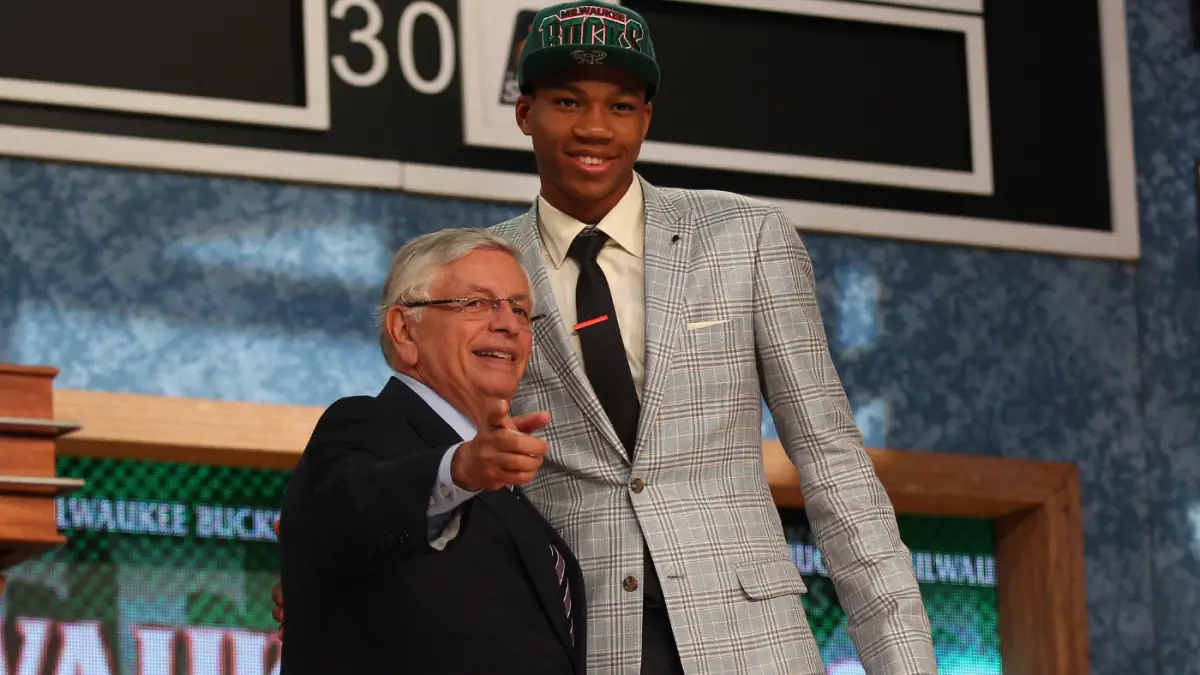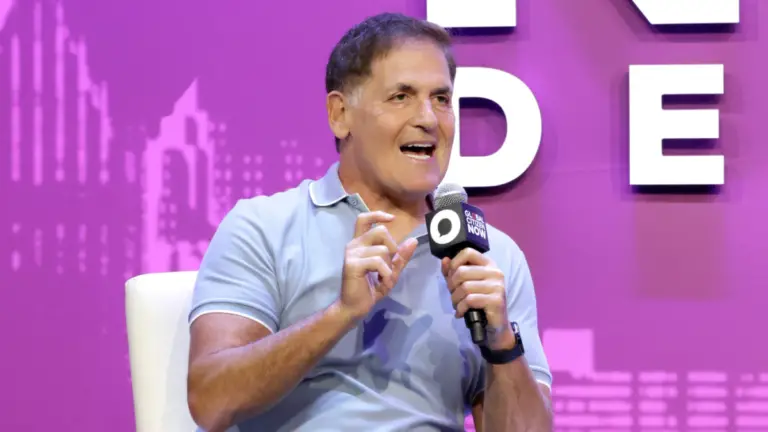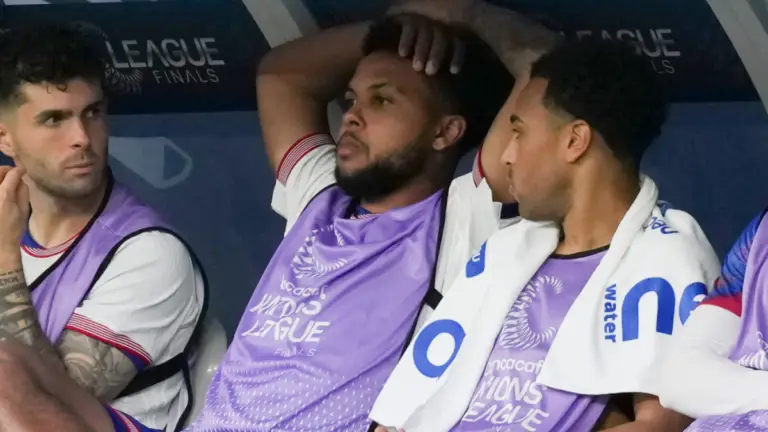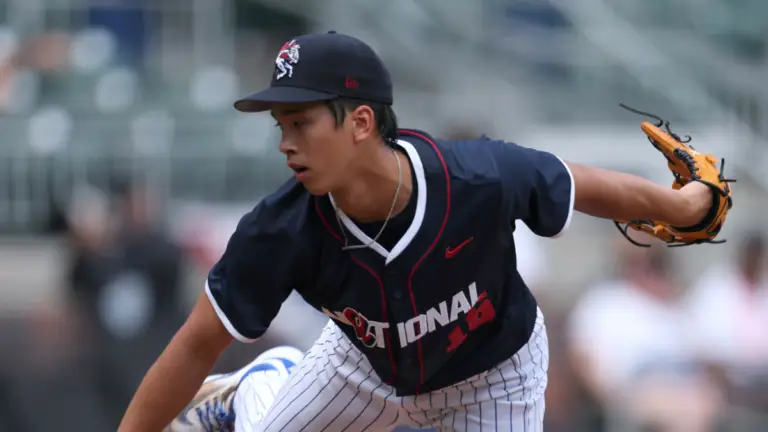

Best pick from each NBA Draft this century: Giannis, Jokić among biggest steals, only two No. 1 picks make cut
Best pick from each NBA Draft this century: Giannis, Jokić among biggest steals, only two No. 1 picks make cut
There are few assets more powerful in the NBA than a No. 1 overall pick. It’s so valuable that teams routinely lose intentionally in an effort to get it, and the league has, in turn, changed rules specifically to discourage this sort of behavior. Basketball is a star-driven sport. There are only 10 players on the court at any given time, and one player can impact virtually everything that happens on a given possession. The right draft pick can change an entire franchise.
Sometimes, that draft pick comes at No. 1 overall. Very often, it doesn’t. The best player in the NBA, Nikola Jokić, was famously drafted during a Taco Bell commercial. We’re on a streak of seven straight years of international MVPs, but the only one of them to be drafted in the top 10 was Joel Embiid. The Indiana Pacers just made the NBA Finals without a top-five pick in their rotation.
We’re now 25 years into the 21st century. That means we’ve seen 25 rookie classes come into the league and play out at least one season. So let’s go through those classes and try to figure out where the best pick came. We will not simply be looking for the best player in each class. No, we want to figure out who got the most bang for their buck with draft slot factored in. We’ll start at 2000 and work our way forward to 2024.

2000: Michael Redd (43rd overall)
The worst draft of the century more than lives up to its moniker here, as only a handful of 2000 picks ever even became reliable starters. The race here comes down to peak vs. longevity. Jamal Crawford played 20 NBA seasons, was a reliably value role player and is remembered fondly even after retirement. Michael Redd has mostly been forgotten. He played around half as many minutes as Crawford. But he was an All-Star and an Olympian, and while Crawford was the No. 8 pick in a weak draft, Redd was taken all the way down at No. 43. Who had the better career is debatable depending on how much you value longevity. Redd was unquestionably the the superior draft pick.

2001: Tony Parker (28th overall)
As a general rule, a Finals MVP at No. 28 overall is always going to be a home run pick. That’s no exception for Tony Parker. He has some mild competition from Pau Gasol, but he was a No. 3 overall pick. Gilbert Arenas might have hit higher statistical highs at No. 31, but Parker steered a dynasty. It’d be hard to ask for much more out of any draft pick, much less one this late.

2002: Carlos Boozer (35th overall)
The emergence of his son Cameron as a top prospect will likely do wonders for Carlos Boozer’s legacy, because for a two-time All-Star, he’s been almost completely forgotten. The most common Boozer talking point, by fair, is his hair (or lack thereof). Nonetheless, we should point out that despite all of the criticism the 2000s Cavaliers got for their roster-building, they did manage to nail two picks in a row early in the decade, the first of which, Boozer, came at No. 35 overall. If only they’d been able to keep Boozer. Perhaps our 2003 winner could have won a championship without moving.

LeBron James has thus far produced 156.6 VORP for his career. The next three highest finishers from his draft class combined for 130.6. These weren’t exactly schlubs, either. Those players were Dwyane Wade, Carmelo Anthony and Chris Bosh. In a legendary draft class, James still laps the field. Virtually nothing could have happened in 2003 to deprive him of this distinction.

The 2004 draft produced only role players at the bottom, so the question here becomes, would you rather have a player who briefly peaked as an MVP candidate, or someone who could reliably be the third- or fourth-best player on a champion for 15 solid years? At the same slot, you likely take the peak. When you factor in the fact that Dwight Howard went No. 1 and Andre Iguodala went No. 9, the edge goes to the longevity candidate.

2005: Chris Paul (4th overall)
I just want to share a funny sequence of events.
- In 2004, Portland drafted Sebastian Telfair at the end of the lottery. He averaged 6.8 points and 3.3 assists per game as a rookie.
- With Telfair in place, Portland decided it didn’t need a point guard. So it traded down from No. 3 to No. 6 to draft Martell Webster.
- A year later, Portland traded Telfair.
It took such a special sequence of bad decisions for the Blazers not to get Chris Paul that we aren’t even going to laugh about Utah, the team that actually traded up to No. 3, taking Deron Williams over him. There’s no competition here. Lou Williams (No. 45), David Lee (No. 30) or Danny Granger (No. 17) might have factored in with a normal class, but Paul blows everyone here out of the water.

There’s a very interesting three-way competition here between Rajon Rondo at No. 21, Kyle Lowry at No. 24 and Paul Millsap at No. 47. Rondo had the most memorable career, but a lot of that was due to the teams he played for. Lowry had the best career front to back. But Millsap was closer than most remember largely because he jumped around a fair bit. He didn’t have one stint like Lowry’s in Toronto, but he made four straight All-Star Teams in Atlanta and was on the early wave of power forwards that could shoot 3s and defend the perimeter. Lowry comes close, but how many four-time All-Stars can you think of that were drafted in the back half of the second round?

2007: Marc Gasol (48th overall)
This is easily the hardest debate of this exercise thus far. Kevin Durant is, clearly, the best player from the 2007 class. He was also the No. 2 pick. Which is the superior pick, an all-time legend at No. 2, or a possible Hall of Famer at No. 48? Your answer is going to come down to just how good you believed Gasol was, and my personal answer is that Gasol was pretty underrated. His passing gets overlooked because he isn’t Jokić, his shooting gets overlooked because he isn’t Dirk Nowitzki, and his defense gets overlooked because he only won a single Defensive Player of the Year honor, but taken together, there really hasn’t been another player with Gasol’s unique combination of skills. Getting him that late qualifies as enough of a value to unseat the obvious star prospect in Durant.

We’re playing out a similar debate in 2008. Russell Westbrook won an MVP as the No. 4 pick. Jordan never came close that level. But he was the No. 35 overall pick, and he’s hung around Denver’s bench for so long that people have forgotten who he was when he was younger. Three All-NBA picks, even at a weak point for centers, is nothing to sneeze at, and even as he declined with age, he remained a beloved teammate for some of the league’s best players.

We’re not quite in LeBron territories of obvious here. The 2009 class was very good, and James Harden would have a case in a lot of other years. But the Warriors took the foundation of a dynasty at No. 7. That’s pretty much an automatic selection.

This one’s pretty safe. The 2010 draft produced a decent number of good players, but George was the only one who ever sustained greatness. That he did so from the No. 10 slot only cements his status as the best pick from his class.

Kyrie Irving was a perfectly acceptable No. 1 overall pick. He just got lapped by two players taken outside of the lottery. Kawhi Leonard hit the highest peak in this class as the No. 15 pick, but Jimmy Butler was significantly more consistent, and at No. 30, was much more of a surprise given his draft projections. If Leonard had a healthier career he would’ve been the no-brainer pick at No. 15. But Butler has played 136 more games thus far. That’s almost two full seasons worth of games. That gives him the slimmest of edges.

The 2012 draft was who this exercise was designed for. There were great picks everywhere. Anthony Davis lived up to the No. 1 billing. Damian Lillard was just as good from No. 6, and Bradley Beal was a solid No. 3 choice as well. Looking for sleepers? How about Khris Middleton at No. 39. Despite all of those reasonable selections, the pick here is obvious: Draymond Green. Golden State got the man who changed NBA defenses forever at No. 35. For all the praise the pick deserves, it’s worth noting that if the Warriors really knew what they had in Green, they wouldn’t have taken Festus Ezeli over him at No. 30. Fortunately, it didn’t cost them Green, and the rest is history.

In theory, the debate between Giannis Antetokounmpo and Rudy Gobert here should mirror the ones we held in 2007 and 2008. It’s an MVP against a lower-level star. Here’s the difference: Antetokounmpo wasn’t even a lottery pick. If he’d been picked in the top five as Durant and Westbrook were, there might be some real room to argue here. But Antetokounmpo went only 12 picks higher than Gobert. Durant went 46 picks above Gasol. That’s the difference here. The Bucks get all of the credit in the world for pulling the greatest player in franchise history out of Greece’s B-League.

2014: Nikola Jokić (41st overall)
Ladies and gentlemen, may I present the greatest draft pick in NBA history. Denver got three MVPs and a championship out of Jokić before he even turned 30, and they took him at No. 41 overall, right between Glenn Robinson III and Nick Johnson. You can’t draft any better than that.

The 2015 draft was extremely top-heavy. Booker and college teammate Karl-Anthony Towns have been reliable All-Stars. Kristaps Porziņģis and Myles Turner have been high-end starters with rare skillsets. And then, after that, basically everyone else has been at their best as a backup. Booker went 12 spots after the top pick, Towns, so he gets the nod here.

This class was unusual in that, depending on when this question has been asked, it could have produced a wide variety of different answers. There once was a time when Ben Simmons seemed like an entirely reasonable No. 1 overall pick. Brandon Ingram, Jaylen Brown, Jamal Murray and Domantas Sabonis have all had their moments in the sun. But Pascal Siakam is arguably the best player out of any of them today, and he was drafted last in that group at No. 27.

How much better is Jayson Tatum than Donovan Mitchell? Certainly a bit. But 10 picks worth? That’s a harder sell, especially given how favorable Tatum’s team circumstances have been. Mitchell’s haven’t exactly been bad, but odds are, Boston could’ve won the 2024 title with Mitchell in Tatum’s place. Given the difference between the No. 3 pick and the No. 13 pick, Mitchell gets the value edge.

For most of their careers, Luka Dončić vs. Shai Gilgeous-Alexander would have played out similarly to Mitchell vs. Tatum. The higher pick was clearly better, but the lower pick was close enough to make it a debate. Now that Gilgeous-Alexander has won an MVP and a championship, there’s not really a pick-value debate between he and Dončić anymore. The difference between 2017 and 2018, though, is that 2017 didn’t produce a second-round pick that’s nearly at their level. Jalen Brunson has grown into a consistent All-NBA pick from the No. 33 slot. As impressive as Gilgeous-Alexander winning MVP from No. 11 is, that 20-pick gap is just too great to ignore.

What a strange draft 2019 turned into. The two surefire stars, Zion Williamson and Ja Morant, haven’t been surefire anythings. We could take one of the second-round picks who turned into starting-caliber centers — Daniel Gafford or Nic Claxton — but Gafford is a low-minutes player and Claxton has never won anything. The real debate here comes down to Darius Garland at No. 5 and Tyler Herro at No. 13. Garland is better, and there’s some irony in this being the debate seeing as how Garland spoke openly about hunting Herro in pick-and-roll last postseason. But it’d be hard to call him eight slots better than Herro given his relatively uninspiring postseason track record. Herro made the Finals as a rookie in 2020 and has proven a capable postseason weapon on offense. His ascent to the All-Star Game last year gets him across the finish line here.

We have stars to choose from at every level of the first round in 2020. Anthony Edwards at No. 1, Tyrese Maxey at No. 21 and Desmond Bane at No. 30 all have cases. But Tyrese Haliburton at No. 12 stands out here because he’s proven pretty definitively that he’s capable of being the best player on a championship team. Even Edwards hasn’t done that, though we obviously suspect that he could with the right teammates. Maxey and Bane are more like the second- or third-best players on great teams. Even if Edwards is better, it’s not enough to close an 11-slot gap, yet even at No. 12, Haliburton has built a big enough lead to ward off Maxey and Bane.

You’d be happy with Cade Cunningham or Evan Mobley from the top three. If Herb Jones ever figures out his 3-point shot consistently, he’ll have a quiet case. He’s the most underrated defender in the NBA and could genuinely win Defensive Player of the Year on the right roster. For a No. 35 pick, that’s an enormous win. But Sengun is our middle ground. He’s not as good as Cunningham or Mobley, but he became an All-Star this season, so the gap is minimal. For a No. 16 pick, that’s an incredible outcome. If he pairs the defensive improvement he made last season with his shooting from the 2023-24 season, he has a real All-NBA shot in the near future.

Here’s a bit of history for you: Jalen Williams just made an All-NBA Team in his third season. Can you name the last player picked outside of the top 10 to do that? He’s pretty notable. It’s Kobe Bryant. Will Williams ever reach the peaks Bryant scaled? Almost certainly no. Is that tidbit alone enough to warrant this placement? No question.

The 2023 draft has thus far produced winners across the board. Toumani Camara at No. 52 would be a candidate in many classes. Amen Thompson has a chance to be a superstar. But Victor Wembanyama is already there. He’s very nearly in the LeBron James category of picks so special that there simply isn’t anything anyone else in his class could have done to take his spot. And his career has only just begun.

Needless to say, there is no Wembanyama in the 2024 class. The debate here comes down to Jaylen Wells, who was probably the rookie last season best equipped to actually contribute to a winning team, and Jared McCain, the one who flashed the most upside. As a No. 39 overall pick, Wells was a remarkable second-round value. But he’s pretty purely a 3-and-D player thus far, and he declined as last season progressed. We didn’t see much of McCain because of injury, but he was running away with Rookie of the Year before that. His scoring upside as a No. 16 selection would be unusual even in a good draft. To fall that far in a class this weak seals what a good job Philadelphia did with this pick. The Sixers saw what he could become. The rest of the league missed. Like McCain, Stephon Castle flashed star potential. He just did so from the No. 4 slot, so it wasn’t nearly as impressive a pick.
NBA,NBA draft,best NBA draft picks,lebron james,stephen curry,giannis,giannis Antetokounmpo,nikola jokic,Golden State Warriors,Indiana Pacers,Cleveland Cavaliers,Milwaukee Bucks,Myles Turner,James Wiseman,Glenn Robinson III,LeBron James,Chris Paul,Andre Iguodala,Jimmy Butler,Donovan Mitchell,Draymond Green,Deron Williams,David Lee,Paul George,Evan Mobley,Domantas Sabonis,Stephen Curry,Kevin Durant,Khris Middleton,Pascal Siakam,Giannis Antetokounmpo,Darius Garland,Jahlil Okafor,Damian Lillard,Kyrie Irving,Festus Ezeli,Tyrese Haliburton,Paul Millsap,Victor Wembanyama,Martell Webster,Shai Gilgeous-Alexander,Ja Morant,DeAndre Jordan,Zion Williamson,Bradley Beal,Joel Embiid,Anthony Edwards,Alperen Sengun,Ben Simmons,Brandon Ingram,Rajon Rondo,Marc Gasol,Cade Cunningham,Carmelo Anthony,Russell Westbrook,Anthony Davis,Lou Williams,Jayson Tatum,Devin Booker,Daniel Gafford,James Harden,Chris Bosh,Jalen Williams,Jalen Brunson,Tyler Herro,Jaylen Wells,Jaylen Brown,Rudy Gobert,Toumani Camara,Dwight Howard,Jared McCain,Desmond Bane,Stephon Castle,Kawhi Leonard,Kyle Lowry,Karl-Anthony Towns,Amen Thompson,Jamal Murray,Tyrese Maxey



